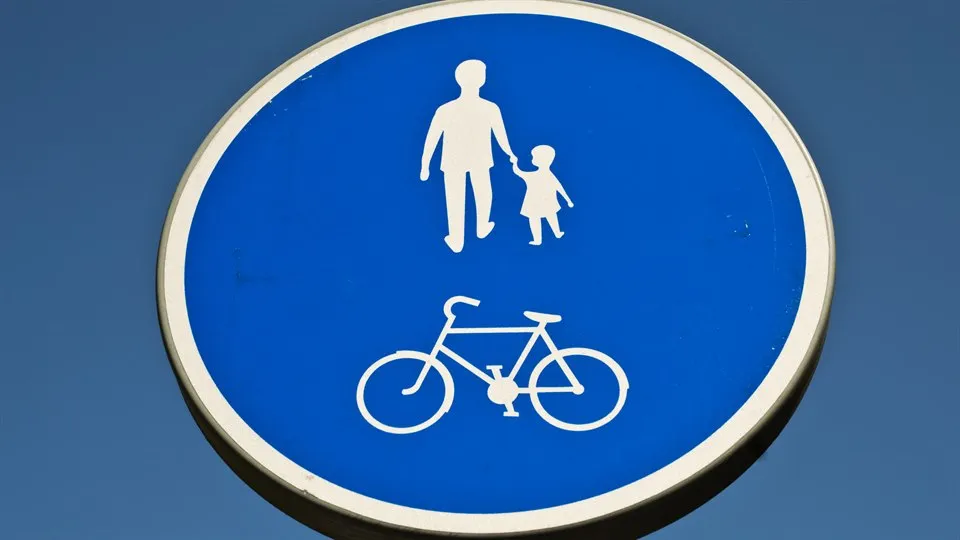Physical inactivity – a leading risk factor for global mortality
Physical inactivity is the fourth leading risk factor for global mortality and it is the main cause of cardiovascular diseases and cancers, which are two of the leading causes of death.
Author: Kyle Lee, Senior Lecturer, The Swedish Winter Sports Research Centre
Physical activity, health and the living environment
The World Health Organization (WHO) recommends adults to engage in at least 150 minutes of moderate-intensity physical activity or 75 minutes of vigorous-intensity physical activity per week. However, 1 in 4 adults around the world currently fail to meet these recommendations.
Policies exist worldwide to promote physical activity among individuals, such as interventions to enhance one’s self-efficacy to engage in physical activity. However, interventions that promote physical activity at an individual level are relatively cost inefficient. From a broader perspective, the living environment is believed to influence the health behaviours of a large proportion of a population for sustained periods of time. Recent research shows that the characteristics of a living environment can promote physical activity in several ways. For example, a living environment with good street connectivity may encourage residents to engage in walking, which is a common mode of transportation for most people.
Walkability and its association with physical activity and health
Several indicators reflect the easiness to walk within a neighbourhood. For example, a walkability index has been proposed to include the residential density, retail floor area ratio, street intersection density and land use diversity. These components reflect the availability of infrastructures in a neighbourhood, the availability of parking space for cars, the connectivity between streets and the availability of different commercial and non-commercial destinations. A neighbourhood with more infrastructures, fewer parking spaces, a higher density of restaurants and supermarkets, and with better street connectivity may encourage walking. In a Swedish study, people living in highly walkable neighbourhoods were found to be more likely to engage in walking for both transport and leisure, as well as engage in more moderate- to vigorous-intensity physical activity per day.
People living in highly walkable areas have been found to be less likely to have waist circumferences greater than 88 cm, which indicates abdominal obesity. The differences in waist circumferences between people living in high and low walkable areas could be explained by the energy expenditure resulting from walking. In addition, people living in neighbourhoods with characteristics supporting more physical activity and less driving have been shown to have higher levels of cardiorespiratory fitness and a lower body mass index (BMI). The positive health outcomes associated with living in an activity-friendly environment are clear and there is growing evidence linking physical activity and health with the walkability of a neighbourhood.
Bikeability and its association with physical activity and health
Cycling is another common mode of transportation in the neighbourhood and is associated with similar benefits as walking, i.e., increased total physical activity, improved cardiovascular fitness and reduced all-cause mortality. People who cycle to work also have a lower risk of cardiovascular disease and obesity, resulting from greater calorie expenditure. From an environmental perspective, replacing car trips with cycling can reduce air pollution, which not only has a negative impact on cardiorespiratory health but also on the global climate. A study from Spain reported that approximately 66 deaths could be avoided annually by replacing 40% of car trips with cycling. Consequently, it is of paramount importance to promote cycling as a mode of transportation and reduce car use.
Investigations into the motivational factors and barriers to cycling has expanded markedly in the last decade, with a focus on identifying key environmental factors and cyclists’ perceptions that could facilitate cycling in the neighbourhood. In a Swedish study it was found that routes with favourable aesthetics and natural environments, as well as good safety, are the motivating factors of bicycle commuting, whilst the presence of exhaust fumes, traffic congestion and poor connectivity were barriers. In an attempt to examine the relationship between the environment and bike use, a Bike Score has been developed and used in over 160 US and Canadian cities to assess the availability of cycling infrastructure, hilliness and connectivity. It was found that Bike Score was positively related to the proportion of the population cycling to work.
Summary
Current evidence supports the notion that the living environment can influence our physical activity behaviours and as a result, our health. Scientific studies have provided insights that have informed urban planners and policy makers regarding the design of an activity-friendly environment that supports walking and cycling, which are two common modes of transportation. Further research is warranted to develop assessment tools to identify key facilitators and barriers of walking and cycling in specific neighbourhoods.
Further Reading
Wang, Y., Chau, C. K., Ng, W. Y., & Leung, T. M. (2016). A review on the effects of physical built environment attributes on enhancing walking and cycling activity levels within residential neighborhoods. Cities, 50, 1-15.
